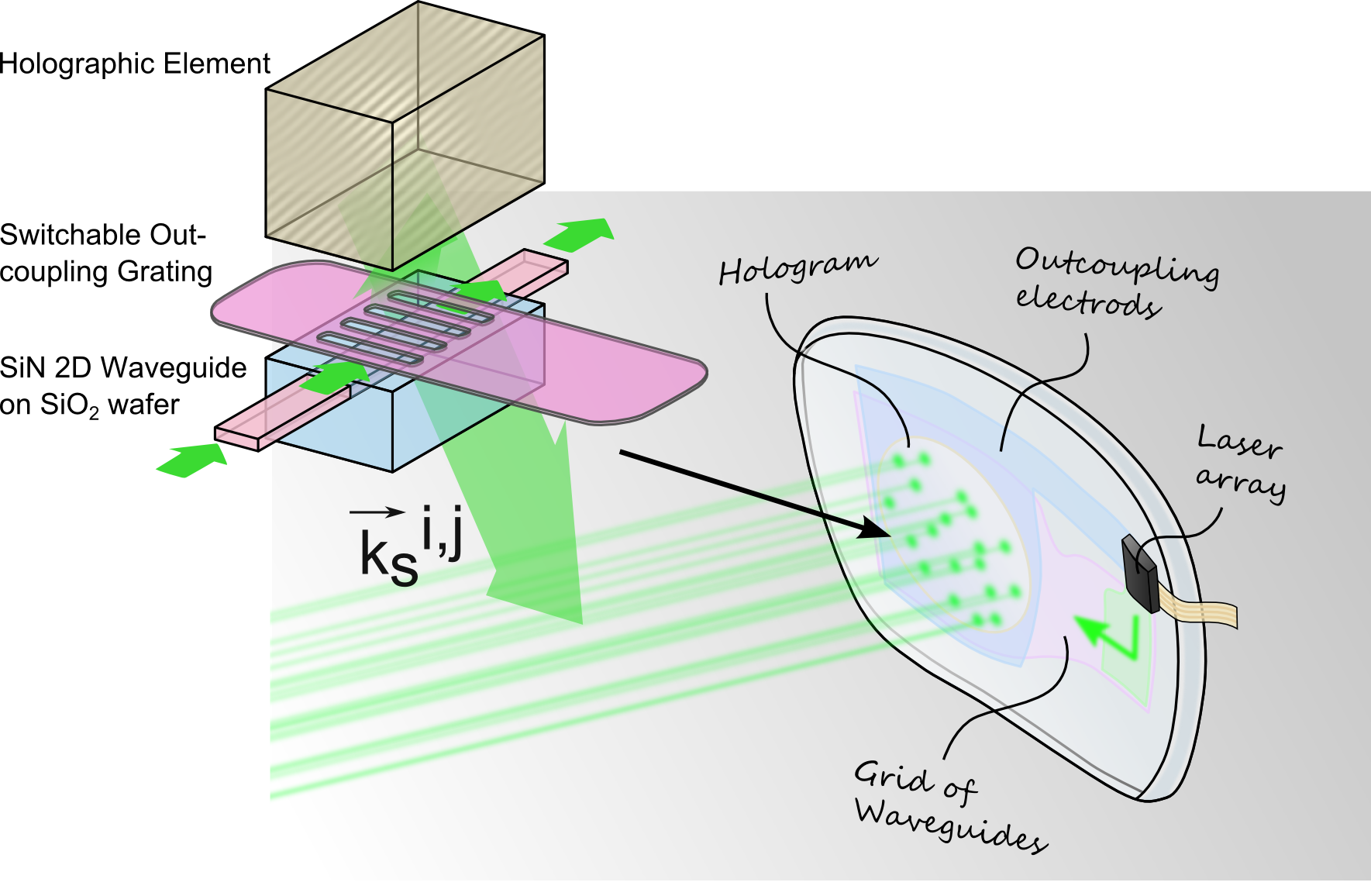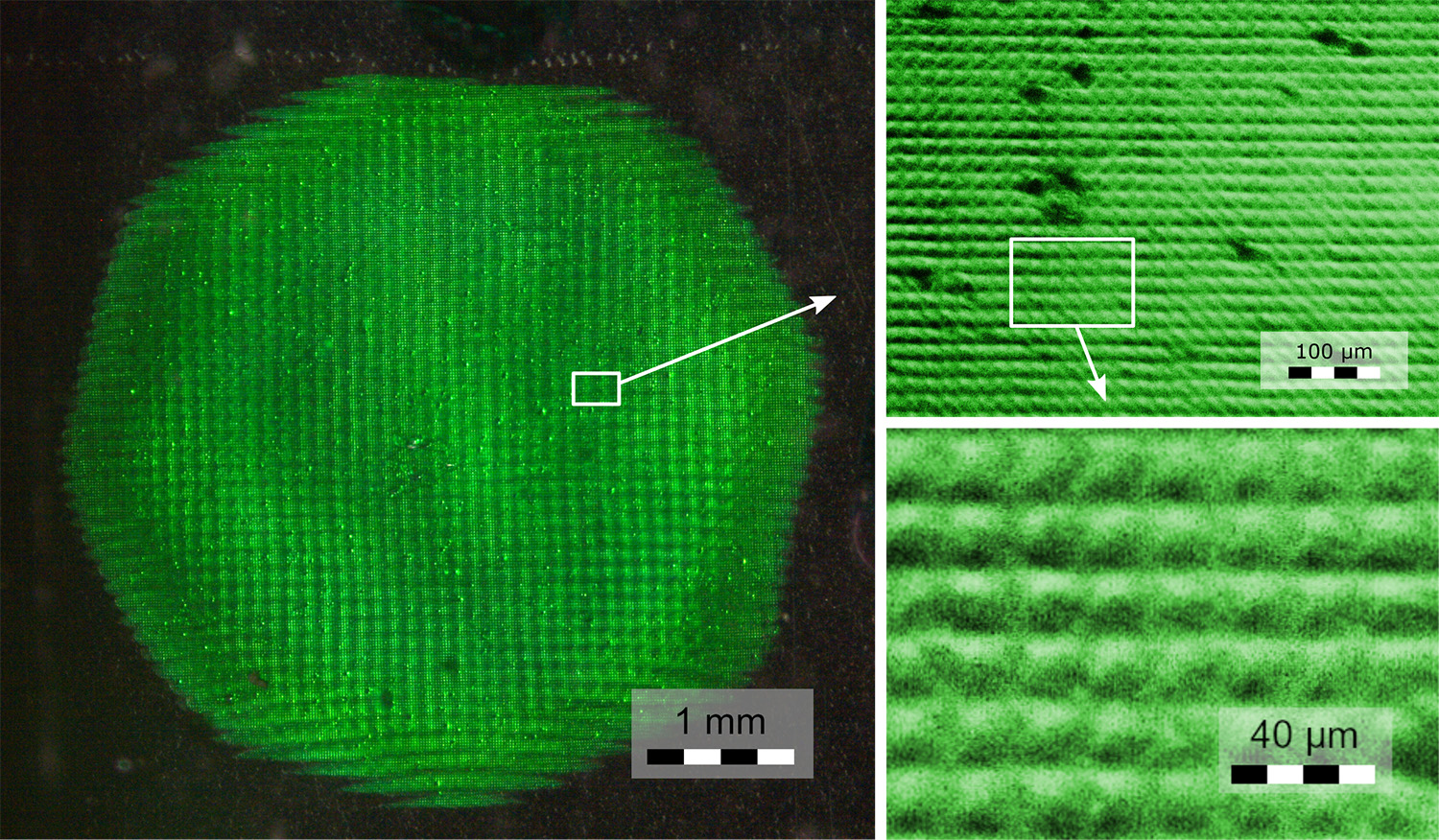Augmented Reality (AR) glasses allow us to observe a real scene, while viewing additional information relevant to the scene: explanatory text, instructions, diagrams, photos, etc. CEA-Leti's ambition is to use holograms, i.e. volumetric optical components, in micro- and nano-photonic manufacturing processes for AR applications and beyond.To avoid reducing the visual field, these holograms must be displayed in an approximately postage stamp size area, i.e. a few tens of mm2. | 
© CEA-Leti
|
More specifically, this involves printing on this surface holographic pixels or "hoels" to reconstruct a coherent image in the back of the eye, when illuminated by laser microsources. This technological challenge has now been met.
Motifs printed within a transparent photopolymer volume
In practice, we print these hoels, several microns in diameter, within a 16 micron thick transparent photopolymer volume using a 532 nm laser", explains Christophe Martinez, manager of CEA-Leti's Retina Projection Program. "The holographic effect is obtained by engraving them on around a hundred, 200 nm layers featuring angular disparities. The writing process is totally repeatable to control hoel size, period and pitch.

| This success, complemented by lodging of a patent, naturally represents a first step. The researchers will evaluate several photopolymers because printing quality depends closely on material characteristics. Moreover, they are currently limited to static holograms but want to go dynamic by activating and deactivating hoels by component external then internal illumination. This is the subject of a number of doctoral cooperations with the University of Haute Alsace (Mulhouse).
|